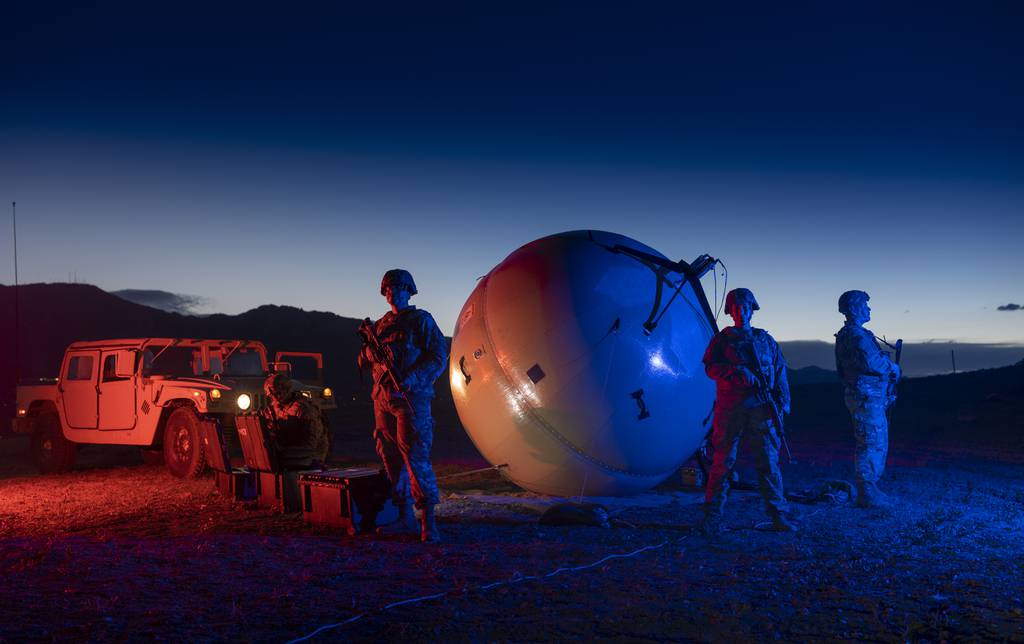
WASHINGTON — The U.S. Army’s mission when it comes to operating in space and using space capabilities is shifting to adapt to the arrival of the U.S. Space Force.
Before the Space Force’s establishment in 2019, the Army’s space-related mission areas included satellite communication; intelligence, surveillance and reconnaissance; and missile warning. All of those capabilities were transferred to the Space Force over the last several years.
But, according to a new vision document released Tuesday, the service is carving out new space-related missions: Integrating joint space capabilities and interdicting or disrupting adversaries’ use of space for hostile purposes.
“Developing new space capabilities organizations and trained professional soldiers to develop effects for Army maneuver forces is critical to multi-domain operations,” the vision document says. “Rapid proliferation and tactical application of competitor space capabilities will erode the advantages that ensure U.S. land dominance. To counter this challenge, current and future Army space integration and interdiction capabilities must enable multi-domain operations for the Army.”
The short document, signed by the Army chief of staff, the secretary and the sergeant major, is focused on stressing “the need to create and exploit space domain effects that enable successful Army operations,” according to an accompanying statement. “The vision also communicates the urgent need to invest more in space capabilities and formations.”
Army Chief of Staff Gen. Randy George said in the statement that “Army space capabilities are built to collocate with and operate alongside ground maneuver formations, providing the appropriate effects for commanders to maintain timing, tempo and synchronization.”
The Army has begun to grow interdiction capabilities and formations to take on the mission, Army Space and Missile Defense Command spokeswoman Lira Frye told Defense News in a Jan. 8 email.
Interdiction capabilities include protecting forces from being seen and targeted by enemy counter-satellite communications, counter-ISR and navigation warfare operations, according to the vision document.
It calls for increased Army investment in capabilities for position, navigation and timing, deep sensing, beyond-line-of-sight communications, force tracking, monitoring the space environment, geospatial information gathering and domain awareness.
New formations set to take responsibility for the interdiction mission are the Multidomain Task Forces (MDTFs) and new space formations, Frye said.
In August 2023, SMD Commander Lt. Gen. Daniel Karbler, who retired from service this month, said in a speech the Army is developing what it is calling a Theater Strike Effects Group. “This theater-level Army space formation is integral for today’s battlefield” he said. “It will allow us to leverage the experience of its command team and staff to ensure success at every echelon, ensuring that all our capabilities are being employed when and where they’re needed best.”
The group “is poised to be a shining example of what the Army and SMDC does best, integrating right at the intersection between land and space domains.”
The Army has already established three MDTFs — two in the Pacific theater and one in Europe. Other MDTFs will be activated in the coming years.
According to the Army’s new space vision document, MDTFs will use Army space interdiction forces with cyber and electronic warfare capability to block adversary defenses. Simultaneously, theater strike effects groups would “synchronize and deliver Army space interdiction fires in support of theater targeting objectives.”
The service will deploy next-generation tactical terminals that fuse data from multi-orbit satellite communications services and space-enabled tactical ISR platforms. The Army would then be able to deliver target information for long-range precision fires and information for effective movement and maneuver, the vision document says.
The Army also plans to layer space capabilities with stratospheric high-altitude balloons and long-endurance, fixed-wing aircraft.
Space formations will be expected to be expeditionary, scalable and mobile, the vision says, and will be “empowered by flexible command relationships at echelon.” Formations should be able to keep up with ground combat formations and help protect those forces, it adds.
The Space and Missile Defense Center of Excellence, along with other centers of excellence and combat training centers, will ensure the vision is executed across the Army, the statement says.
Author: Jen Judson
Source: DefenseNews



